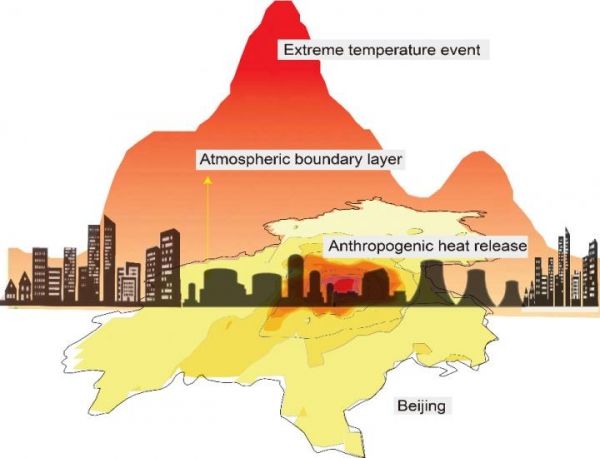Anthropogenic, or human-made, heat flux in the near-surface atmosphere has changed urban thermal environments. Much of this fluctuation has been noted with rapid development of the global economy and urbanization since the turn of the 21st century. Meanwhile, the number of extreme temperature events in the first decade of the 21st century grew faster than in the last 10 years of the 20th century. During this period, urban extreme heat events have become more frequent, breaking temperature records more often.
"We found the relationships between anthropogenic heat flux and extreme temperature events…" said Prof. XIE Zhenghui, a scientist with the Institute of Atmospheric Physics, Chinese Academy of Sciences. "…including both extreme cold and heat events, based on seven extreme temperature indices by conducting the advanced model."
Many researchers have studied urban extreme temperature events, including the heat effect of the anthropogenic heat flux from different time scales, urban heat island effect, and the synergistic interactions between urban heat island and heat waves. However, the relationships between anthropogenic heat flux and extreme temperature events have been less studied.
Read more at Institute of Atmospheric Physics, Chinese Academy of Sciences
Image: Anthropogenic heat flux reduces extreme cold events and increases the extreme heat events. (Credit: Bin Liu)


